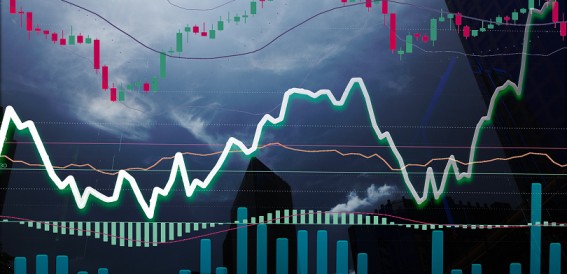- Last Updated: Mar 27,2024 |
- Religare Broking
Nifty 50, India's benchmark stock index, is calculated using a free-float market capitalisation-weighted methodology. Comprising 50 well-established and actively traded companies across various sectors, its calculation involves assessing market capitalisation, offering a comprehensive snapshot of India's equity market performance and trends. Let’s explore what Nifty is and how Nifty 50 is calculated.
- What is NIFTY 50?
- How is NIFTY Calculated in Share Market?
- Conclusion
Topics Covered:
What is NIFTY 50?
The NIFTY 50 stands as India's leading stock market index, encompassing 50 of the nation's most influential and actively traded companies across various sectors. It serves as a vital barometer, reflecting the combined performance of these top-tier entities, including major players in finance, technology, and other pivotal industries.
This index accurately mirrors the market's overall health and trends, providing investors and analysts with a comprehensive snapshot of India's economic vitality. As a widely tracked benchmark, movements in the NIFTY 50 index showcase these leading companies' collective sentiment and performance, influencing investment decisions and serving as a critical indicator of the country's financial trajectory. There are many investors who use demat account only to invest in Nifty 50 for balanced returns.
How is NIFTY Calculated in Share Market?
Let’s understand how NIFTY 50 is calculated and shed it's light on its influence and utility for investors, analysts, and the broader financial community.
The methodology behind NIFTY 50's calculation revolves around a market capitalisation-weighted approach. Unlike a simple average, wherein each stock holds the same weight, the NIFTY 50 index considers the market cap of each constituent company.
The formula for calculating the NIFTY 50 involves several steps. First, it selects 50 companies based on predefined criteria like liquidity, market cap, and sector representation. These companies represent various industries, ensuring diversity within the index. To understand what is NIFTY 50 in Share Market it is important to understand this.
Next, the index's value is derived through free-float market capitalisation. Free-float market capitalisation refers to the total market value of a company's outstanding shares, considering only the shares available for public trading. It excludes locked-in shares, promoting a more accurate representation of the stock's true market value.
The calculation involves multiplying the free-float market cap of each company by its respective weight in the index. The weight assigned to each company depends on its contribution to the total market cap of the NIFTY 50. Companies with higher market cap hold more weight in the index.
Let's consider a hypothetical scenario:
Company A has a free-float market capitalisation of Rs 1,000 crore, while Company B's free-float market capitalisation stands at Rs 500 crore. The total free-float market cap of all 50 companies in the index amounts to Rs 10,000 crore.
Company A's weight in the index would be calculated as follows:
Company A's Weight = (Company A's Free-float Market Cap / Total Free-float Market Cap of NIFTY 50) * 100
Company A's Weight = (Rs 1,000 crore / Rs 10,000 crore) * 100 = 10%
Similarly, Company B's weight in the index can be computed:
Company B's Weight = (Company B's Free-float Market Cap / Total Free-float Market Cap of NIFTY 50) * 100
Company B's Weight = (Rs 500 crore / Rs 10,000 crore) * 100 = 5%
Thus, Company A would carry twice the weight of Company B in the index due to its higher market cap.
Recommended Read : Understanding NIFTY Next 50
After determining the weights for all 50 companies, the NIFTY 50's value is calculated by summing up the products of each company's free-float market cap and its respective weight. This cumulative figure represents the index value and reflects the overall market performance of the selected companies. Thus, knowing how NIFTY 50 is calculated provides insight into the methodology used to gauge the market's collective performance.
The NIFTY 50 index is rebalanced periodically to ensure that it accurately represents the current market scenario. Rebalancing involves adjusting the constituent stocks and their weights based on market cap changes or stock price shifts. For example, if a company's market capitalisation grows substantially, its weight in the index may increase during the rebalancing process to reflect its enhanced significance in the market.
Conclusion
The NIFTY 50's calculation, using a free-float market capitalisation-weighted methodology, serves as a crucial tool in India's financial landscape. This index, consisting of 50 top-performing companies across sectors, and, offers a detailed outlook on India's equity market performance. By understanding the meticulous process behind its computation, investors gain insights into market trends, economic vitality, and the collective sentiment of leading companies.
The periodic rebalancing ensures the index accurately represents the evolving market scenario. The influence of the NIFTY 50 remains significant, guiding investment decisions and being a reliable barometer of India's economic trajectory. Understanding how the index is calculated, aids investors, analysts, and the broader financial community in making informed choices.













